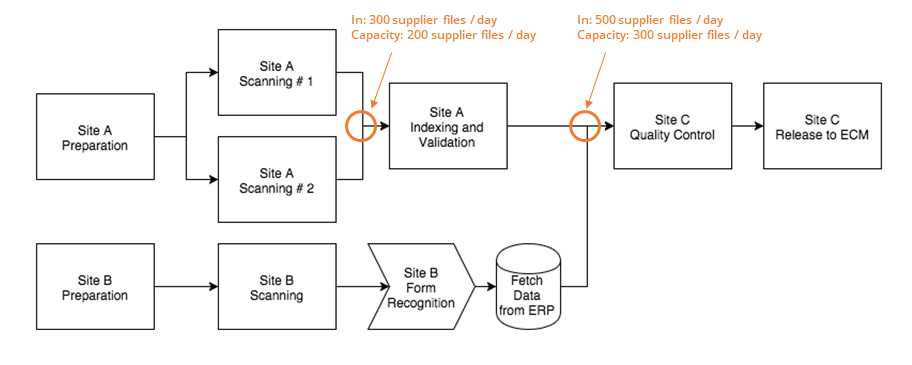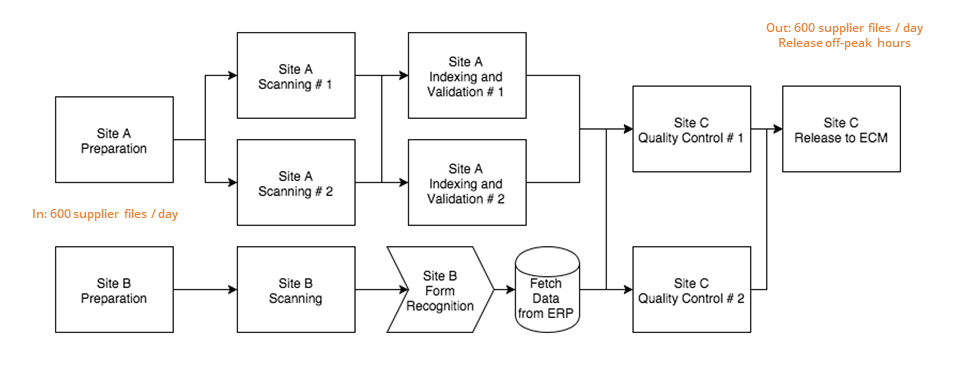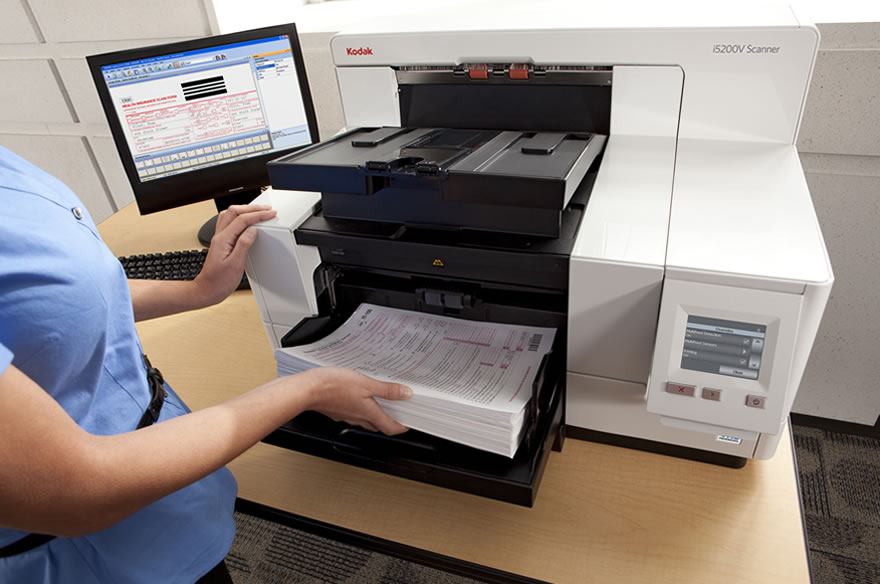With leading business imaging hardware providers such as Kodak Alaris and Fujitsu churning one powerful model after another of their lines of production scanners, we explore the significance of scanner speeds and ways to maximize ROI on production scanners.
This is most relevant in the case of backfile conversion service providers who need to optimize their operations to arrive at the highest volumes of approved scanned, indexed and released documents because it’s usually the basis for pricing their services and getting paid.
How significant is scanner speed?
Take the example of an average production scanner:
- Speed range: 72-135 PPM (pages per minute)
- ADF capacity range 200-500 sheets (how many sheets you can load in the automatic document feeder)
- Daily Duty Cycle range: 8,000 – 100,000 pages (how many pages can be scanned per day)
On paper, with one scanner of 100 PPM, two working shifts (8 hours each), and continuous loading on ADF, you can scan 2.5 million pages per month. But is it really possible?
We all know that scanning is one thing and archiving is another. We also know that scanner speeds are one thing, while actual usage of those speeds is another.
Some of the common challenges to using scanners at full capacity include:
- Delays in prep stages – removing staples, sorting different sizes, handling worn out sheets, and adding separators, etc.
- Documents located at multiple sites and locations
- Slow network speeds
- Indexing through manual data entry or OCR or both
- Fetching indexing data from external sources
- Validation and quality control of data entered
- Release of final data to an ECM or a file system
Software is the Key
Proper production planning is required in a way similar to manufacturing companies in order to maximize the usage of resources. Backfile conversion businesses know that very well and they manage their resources and schedules to ensure optimal throughput. However, success in this regard is highly dependent on the software being used and its ability to facilitate workflow-based scanning, distributed document capturing, maximum automation, fast processing, and zero downtime.
Workflow-based Scanning
Workflow-based scanning is critical to ensure parallel operations and best use of resources. Take this scenario for example with a backfile conversion operation spanning two sites. A quick look at the throughputs shows that there are two bottlenecks and the final outcome of the operation is 300 supplier files per day scanned, indexed and released.

With a workflow-based high volume scanning software like ArcMate Capture®, administrators can analyze the traffic and easily modify the workflow design and add one indexing station and one quality control station doubling the final outcome to 600 supplier files per day.

When designing scanning workflows it is important to ensure that scanning stations are operating at full capacity with continuous loading of ADFs and backup plans for when a scanner needs to be replaced or serviced.
Distributed Capturing
To avoid transporting documents to a central scanning location and choking the main production line, distributed capturing allows for the scanning of documents at multiple locations in parallel. This is quite helpful when there are numerous sites with smaller volumes that can be handled by smaller office or network scanners.
With ArcMate Capture® distributed capturing is easily setup and managed from a central location with complete control as if everything is running at a single site.
Maximum Automation
Backfile conversion companies need to ensure the software they’re using can do the maximum possible to automate operations in order to maximize throughput.
ArcMate Capture® features a wide range of automation features, from the standard batch scanning, to intelligent form recognition, OCR, head-up digitizing, to scripted stages that can be programmed to achieve anything.
Fast Processing
Automation apart, processing power and network bandwidth have their limits, and that’s something backfile conversion companies need to pay attention to when designing operations for larger projects.
ArcMate Capture® was used to handle some of the largest backfile conversion projects regionally and globally including the 1.2 billion project of NCB Al Ahli Bank in Saudi Arabia. As such ArcMate Capture® was designed to handle large volumes and make the best use of resources to process faster. For instance, the data structure for live batches has been optimized to use the least amount of bandwidth, and the workflow designer allows to offload CPU consuming tasks to separate machines or to run at off-peak hours.
Zero Downtime
Time is money in scanning projects with tight delivery timelines and commitments. Downtime and inefficiency can cost money and can cause a project to fail.
ArcMate Capture® is the solution of choice for leading backfile conversion service providers for its high performance, reliability and zero downtime.





